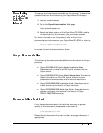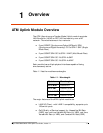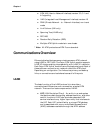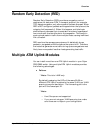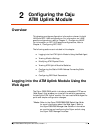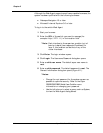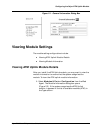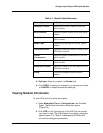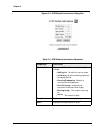
Cajun P550/P880 Switch ATM Uplink User Guide, Version 1.1
Overview
1-7
Random Early Detection (RED)
Random Early Detection (RED) provides a congestion control
mechanism for data over ATM. A transport protocol (for example,
TCP) detects congestion only after a packet has been dropped. When
RED is NOT configured, packets are dropped when the queue at the
outgoing link becomes full. When this happens, multiple hosts
simultaneously decrease their transmission windows, regardless of
how much each host contributes to the congestion. This results in
synchronized peaks in traffic from multiple hosts, causing inefficient
link utilization.
RED monitors the average queue size and it statistically drops
packets in congested conditions before the queue is full. Therefore,
the hosts that generate more traffic during queue congestions mos
likely have more packet loss than hosts generating less traffic.
Multiple ATM Uplink Modules
You can install more than one ATM Uplink module in your Cajun
P550/P880 switch. Using multiple ATM Uplink modules provides
the following advantages:
■ Failover
* Note: This is for LANE only.
By statically assigning the LECs of the same ELAN on
different ATM Uplink modules to the same VLAN, per-VLAN
spanning tree provides failove . The forwarding port is the
port with the lowest port ID.
* Note:
• Hunt Groups are not supported.
• If you are not using per-VLAN spanning tree, make
sure there are no loops in your configuration.



